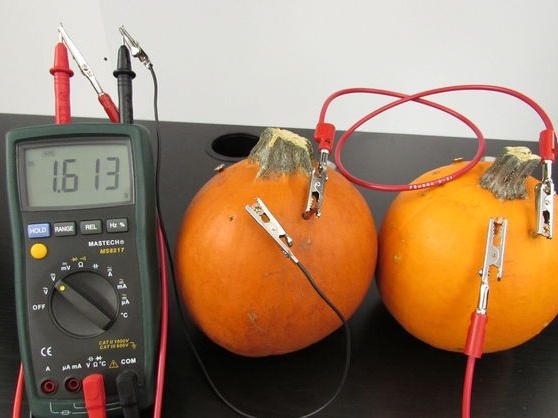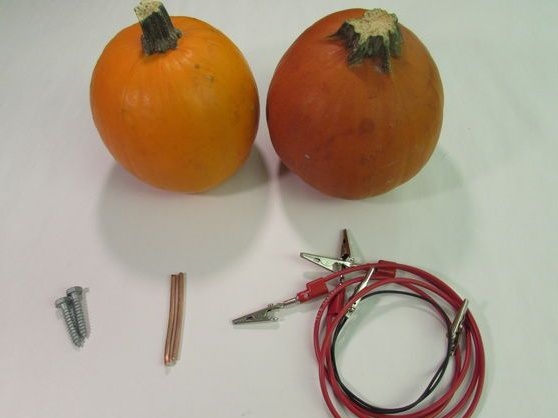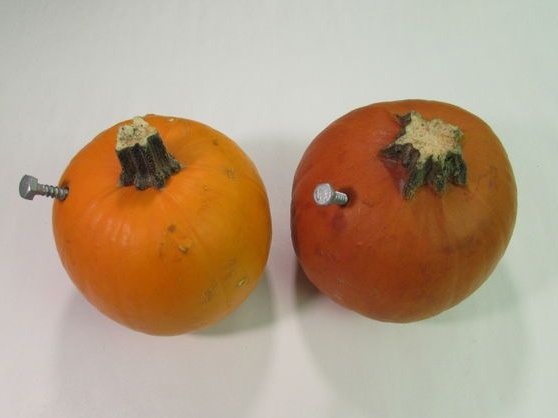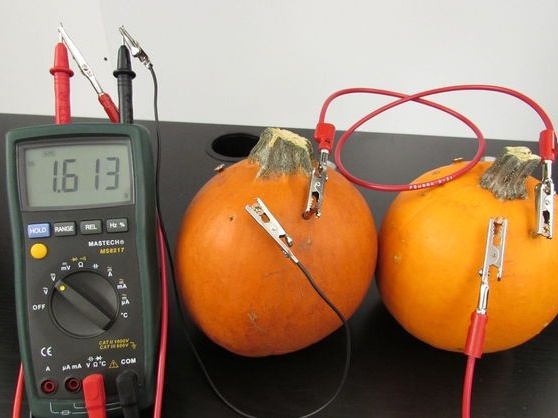
Essence homemade consists in collecting the battery from improvised materials. In most cases, various fruits or vegetables will be needed for such purposes. First of all, this is a rather interesting experiment for novice residents of our sites. And secondly, knowing some of the basics of chemistry, you can build a simple battery in difficult life conditions and charge it with a mobile, or, say, a flashlight battery.
Specifically, in this homemade product, such an autumn berry as a pumpkin will be used to create a homemade battery.
Materials and tools for homemade:
- pumpkins (one pumpkin is enough for the experiment, but thanks to the amount, you can get a higher voltage);
- nails or screws with zinc coating (zinc is needed for a chemical reaction);
- copper (copper wire, coins, plates and any other copper parts suitable in shape and size);
- wires;
- a multimeter for checking indicators;
- It will be useful to find crocodile clips (simplifies the assembly process).

Battery manufacturing process:
Step one. We install galvanized elements
First, the author installs zinc-coated elements in pumpkins. If several pumpkins will be used, the elements can be connected in series and thereby receive more energy. Bolts or other items must be inserted into the pumpkin so that the wire can be connected to the outside. The deeper the contact is immersed, the more energy will be generated.

Step Two Setting copper contact
The copper contact is inserted similarly to galvanized. It is important that both contacts do not close inside the pumpkin or outside.

Step Three Connect the contacts
Now we got two batteries to sum their energy, the elements are connected in series. To do this, you need wires, with the help of them you need to connect the copper contact of one pumpkin with galvanized another. You can use a larger number of pumpkins, then the voltage will be even higher.

Step Four Testing battery
Now the battery can be tested, the author uses a multimeter for measurements.Since the plus will form on the copper contact, the red wire of the multimeter is connected here. Well, black, respectively, must be connected to a galvanized contact. As a result, the author's voltage was 1.613 Volts, that is, a little more than in one finger battery. And it all turned out to get from two pumpkins.

You can try to install several contacts in one pumpkin or increase their area. As a result, the voltage should increase. You can also try to find the optimal distance between the electrodes in order to receive the greatest amount of energy.
To get a higher current, pumpkins can be connected in parallel. Of course, such a battery will not work very long, everything will be limited by the amount of zinc on the bolts and the reagent in the pumpkin.
